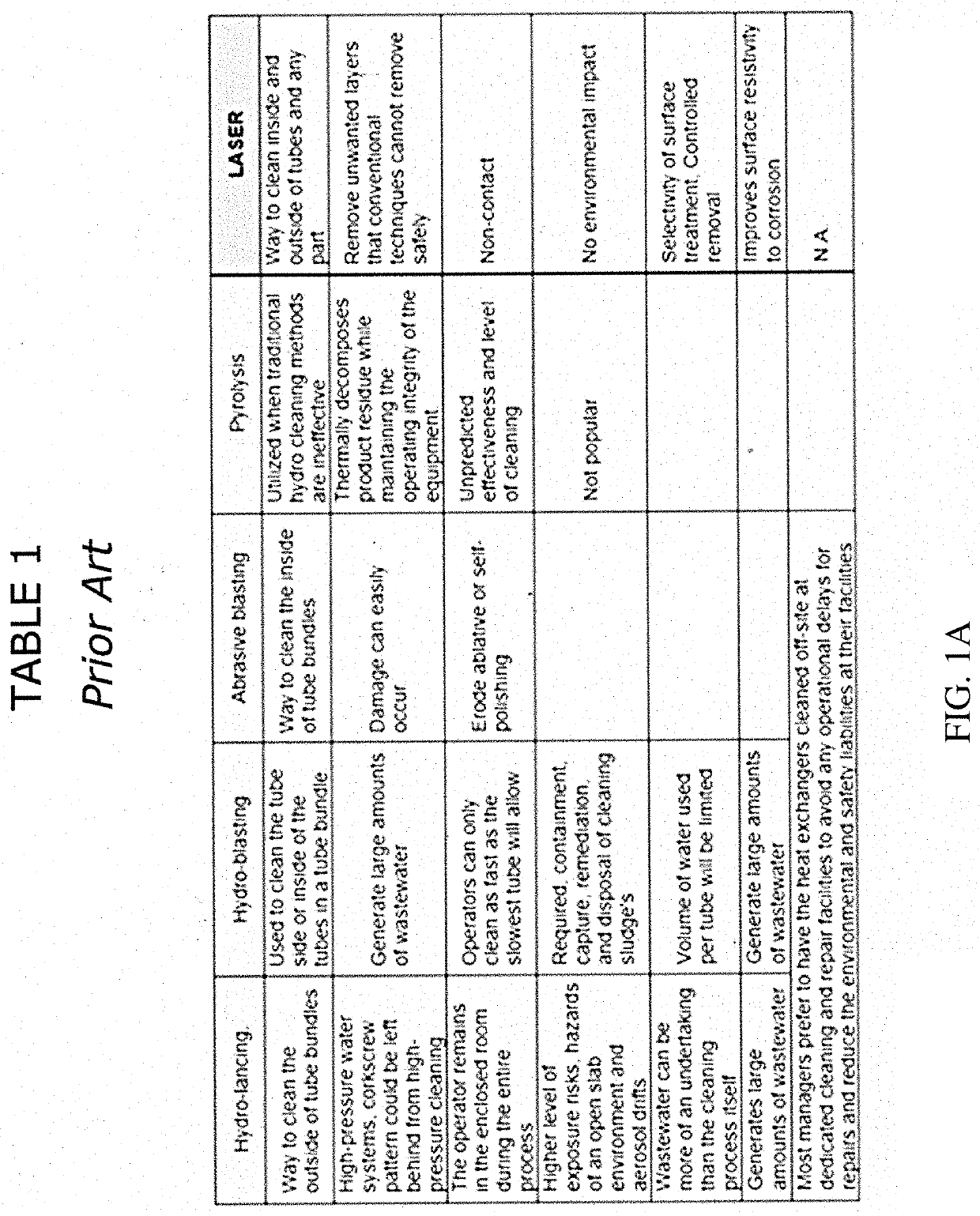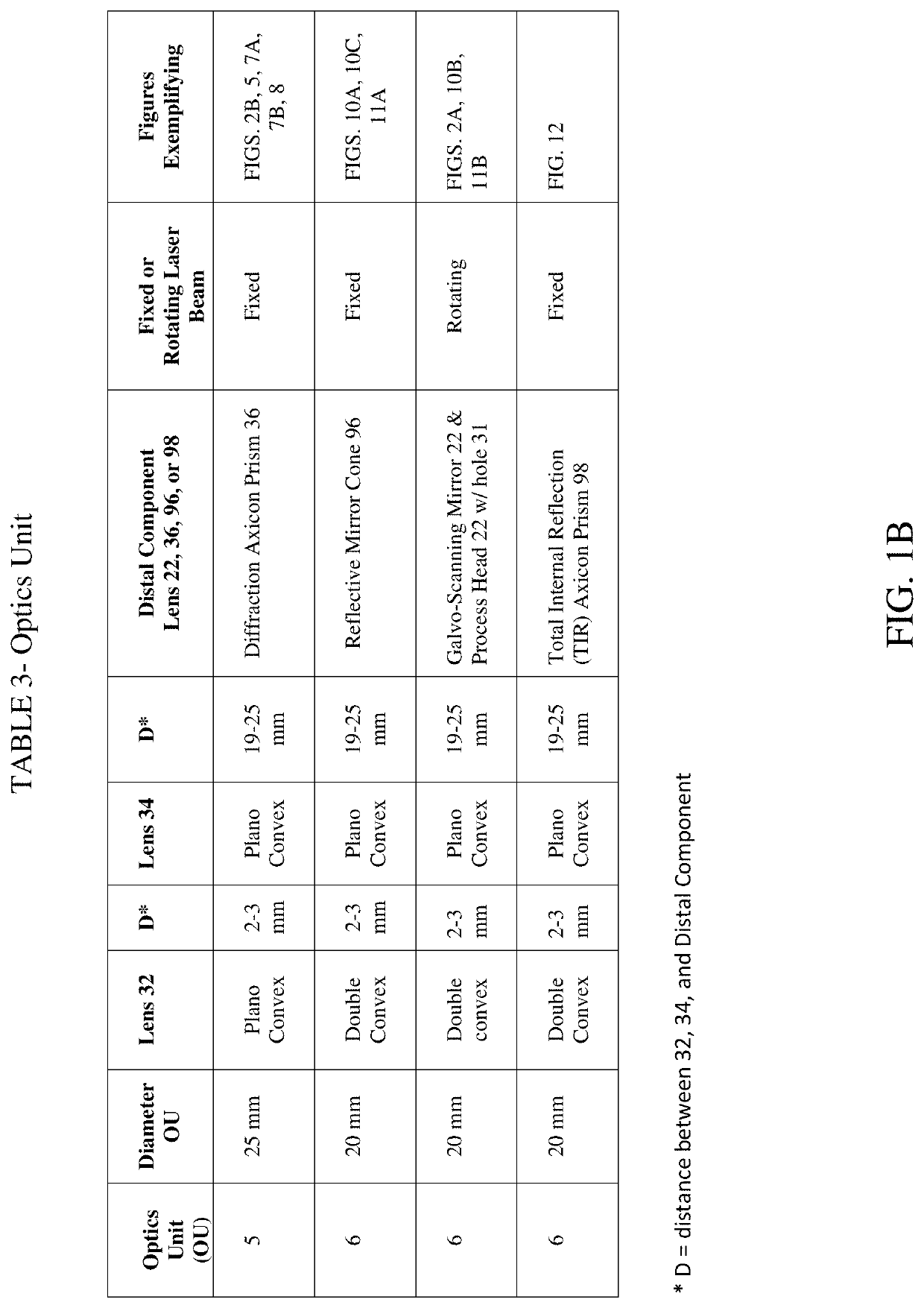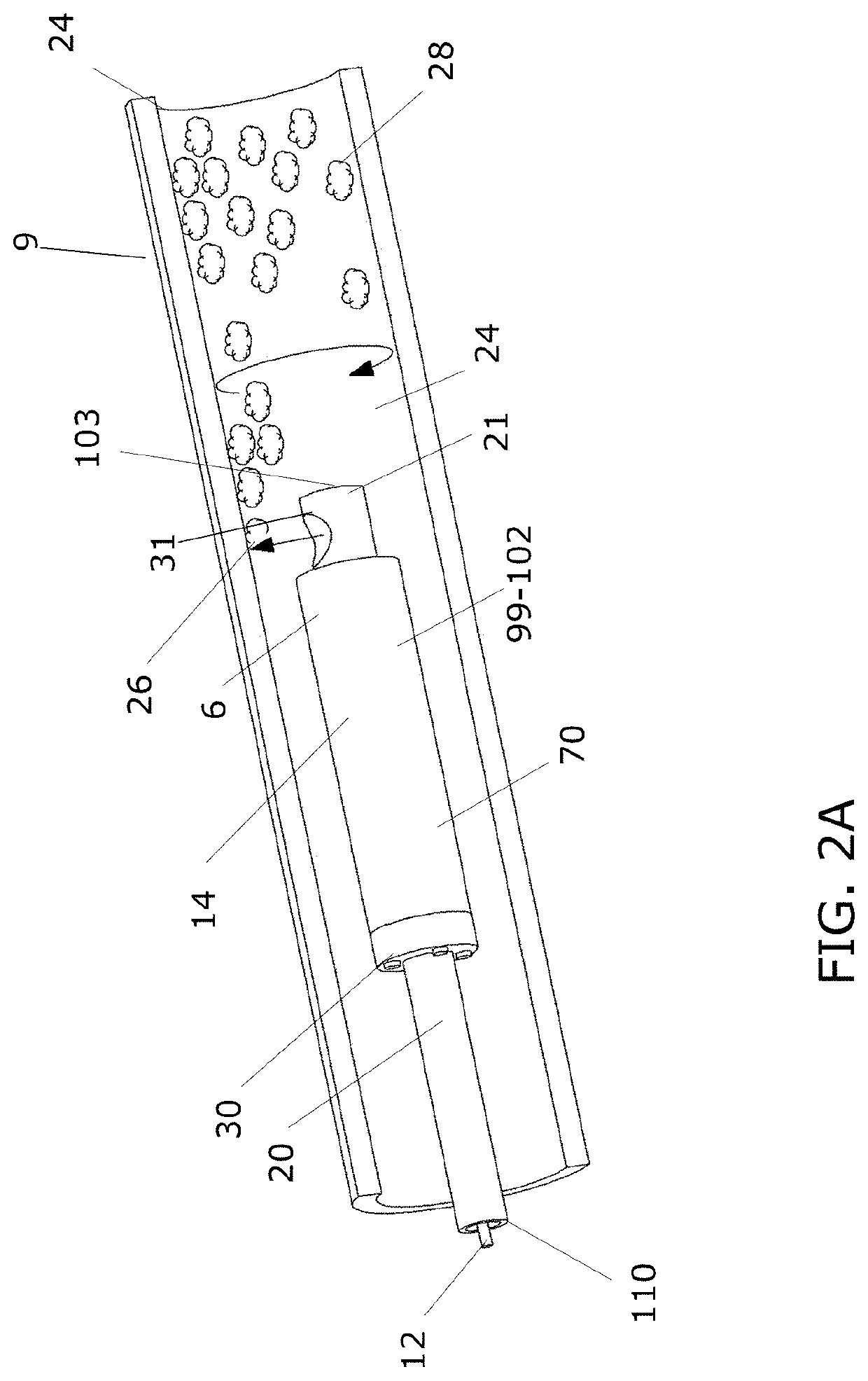Laser System for Non-Contact and Selective Removal of Corrosion from Tubes Internal Surfaces
a laser cleaning and non-contact technology, applied in the field of contactless laser cleaning system, can solve the problems of reducing equipment efficiency and waste of revenue, increasing heat transfer loss in dirty tubes, and accumulating soot and corrosion damage quickly in the tubes, etc., to achieve the effect of minimal maintenance requirements, convenient use and reliability
- Summary
- Abstract
- Description
- Claims
- Application Information
AI Technical Summary
Benefits of technology
Problems solved by technology
Method used
Image
Examples
example 1
[0122]An experiment was performed using the laser cleaning system of FIG. 8 comprising: two plano-convex lens 32, 34 with curves facing, and a Diffraction Axicon lens 36. The beam parameter (min) is 25 mm (lens 32), 24.4 mm (lens 34), and 12.8 mm (lens 36). Table 4 show irradiance parameters with respect to sampled tube 9 inner diameters; ‘39, 42, and 45 mm’. It is based on a design with the focusing option of axicon parameters; with apex angle 90 degrees, and the axicon surface is turned to the lenses side.
TABLE 4Tube DiameterTube DiameterTube DiameterLEVEL39 mm42 mm45 mm0.5 max 0.6 mm0.68 mm0.68 mm0.1 max1.25 mm1.36 mm1.35 mm
[0123]Referring FIGS. 13A-13C: are graphs of the Incoherent Irradiance in watts / cm2 (y-axis) versus the width of the illuminated laser ring at the tube surface in millimeters (mm) at three different tube diameters: tube diameter 39 mm (FIG. 13A), 42 mm (FIG. 13B), and 45 mm (FIG. 13C), respectively. Results demonstrate that the width of illuminated laser ring ...
example 2
[0124]Another experiment was performed using the laser cleaning system of FIG. 12 comprising optics unit 6: a double convex lens 32, a plano-convex lens 34 with curves facing, and an TIR Axicon lens 98. The beam parameter (min) is 16.8 mm (lens 32), 16.4 mm (lens 34), and 9.3 mm (lens 98). Table 5 is shows irradiance parameters with respect to sampled tube 9 inner diameters; ‘39, 42, and 45 mm’.
TABLE 5Tube DiameterTube DiameterTube DiameterLEVEL39 mm42 mm45 mm0.5 max0.19 mm0.19 mm0.27 mm0.1 max0.45 mm0.27 mm0.50 mm
[0125]Referring FIGS. 14A-14C: are graphs of Incoherent Irradiance in watts / cm2 (y-axis) versus the width of the illuminated laser ring at the tube surface in millimeters (mm) at three different tube diameters: tube diameter 39 mm (FIG. 14A), 42 mm (FIG. 14B), and 45 mm (FIG. 14C), respectively. Results demonstrate that the width of illuminated laser ring at the tubes 9 inner surface 24 ranges from 0.19 to 0.27 mm at half maximum. And it ranges between 0.27 to 0.5 mm at 10...
PUM
| Property | Measurement | Unit |
|---|---|---|
| area | aaaaa | aaaaa |
| output power | aaaaa | aaaaa |
| distance | aaaaa | aaaaa |
Abstract
Description
Claims
Application Information
 Login to View More
Login to View More - R&D
- Intellectual Property
- Life Sciences
- Materials
- Tech Scout
- Unparalleled Data Quality
- Higher Quality Content
- 60% Fewer Hallucinations
Browse by: Latest US Patents, China's latest patents, Technical Efficacy Thesaurus, Application Domain, Technology Topic, Popular Technical Reports.
© 2025 PatSnap. All rights reserved.Legal|Privacy policy|Modern Slavery Act Transparency Statement|Sitemap|About US| Contact US: help@patsnap.com



